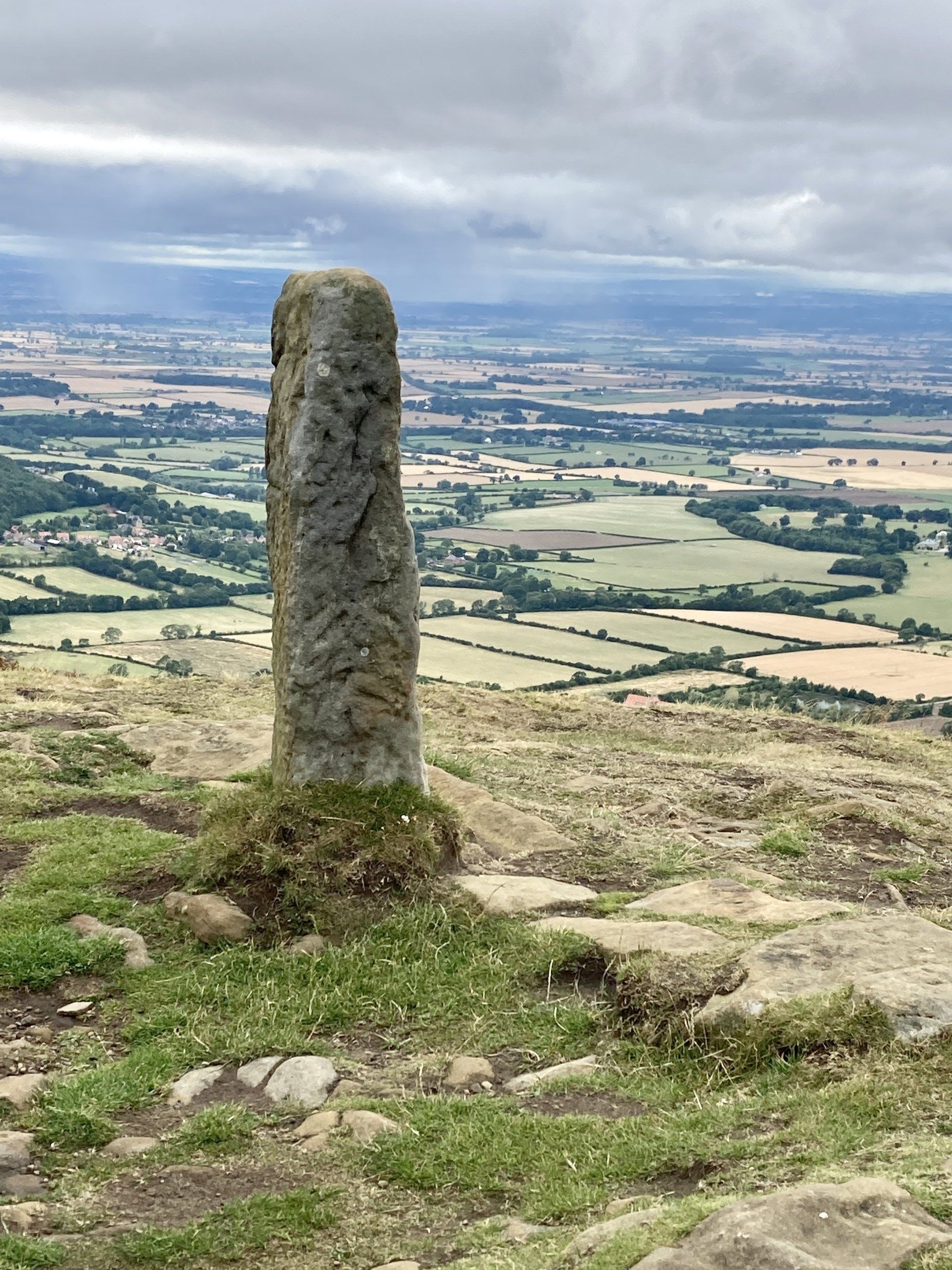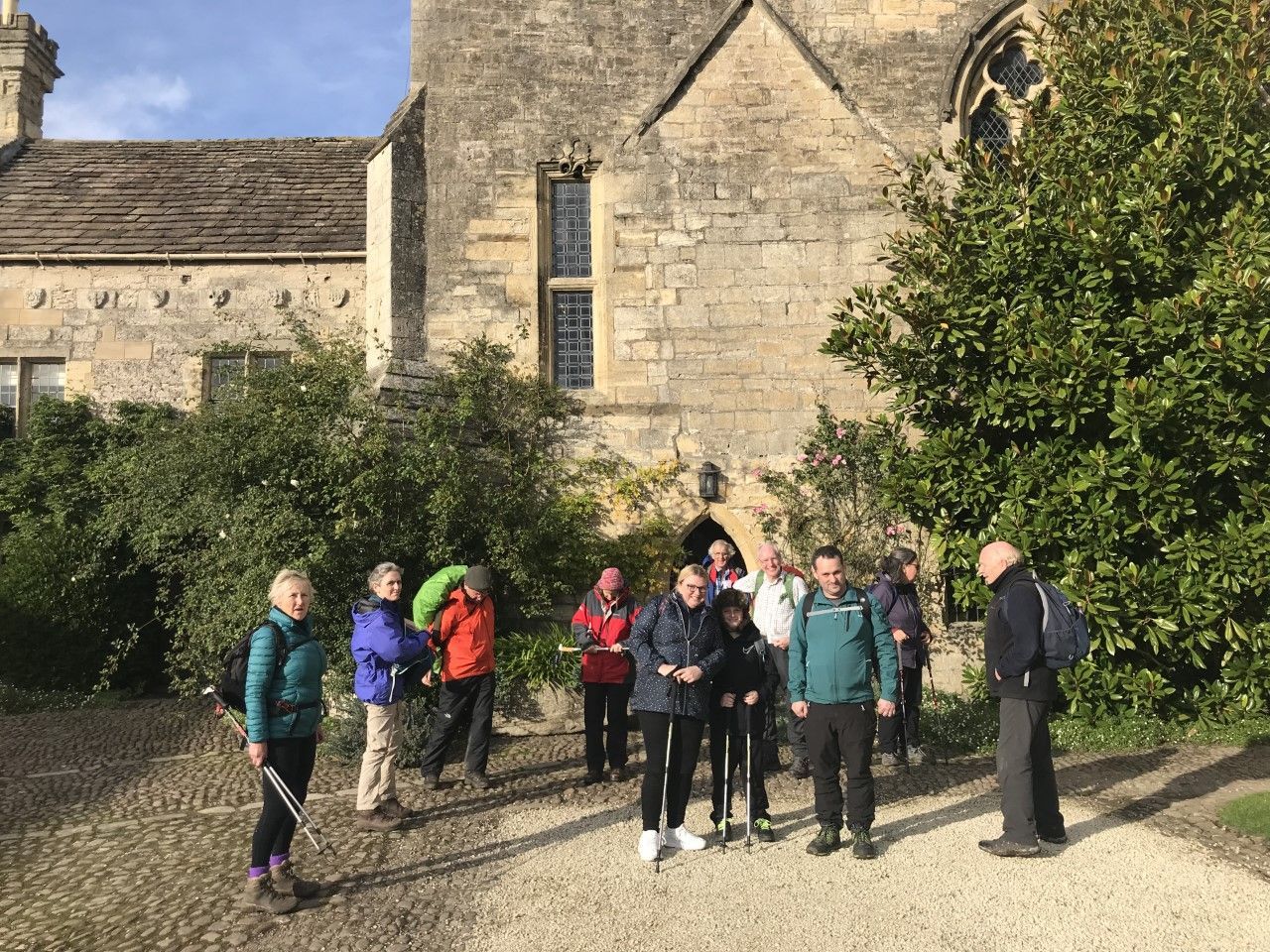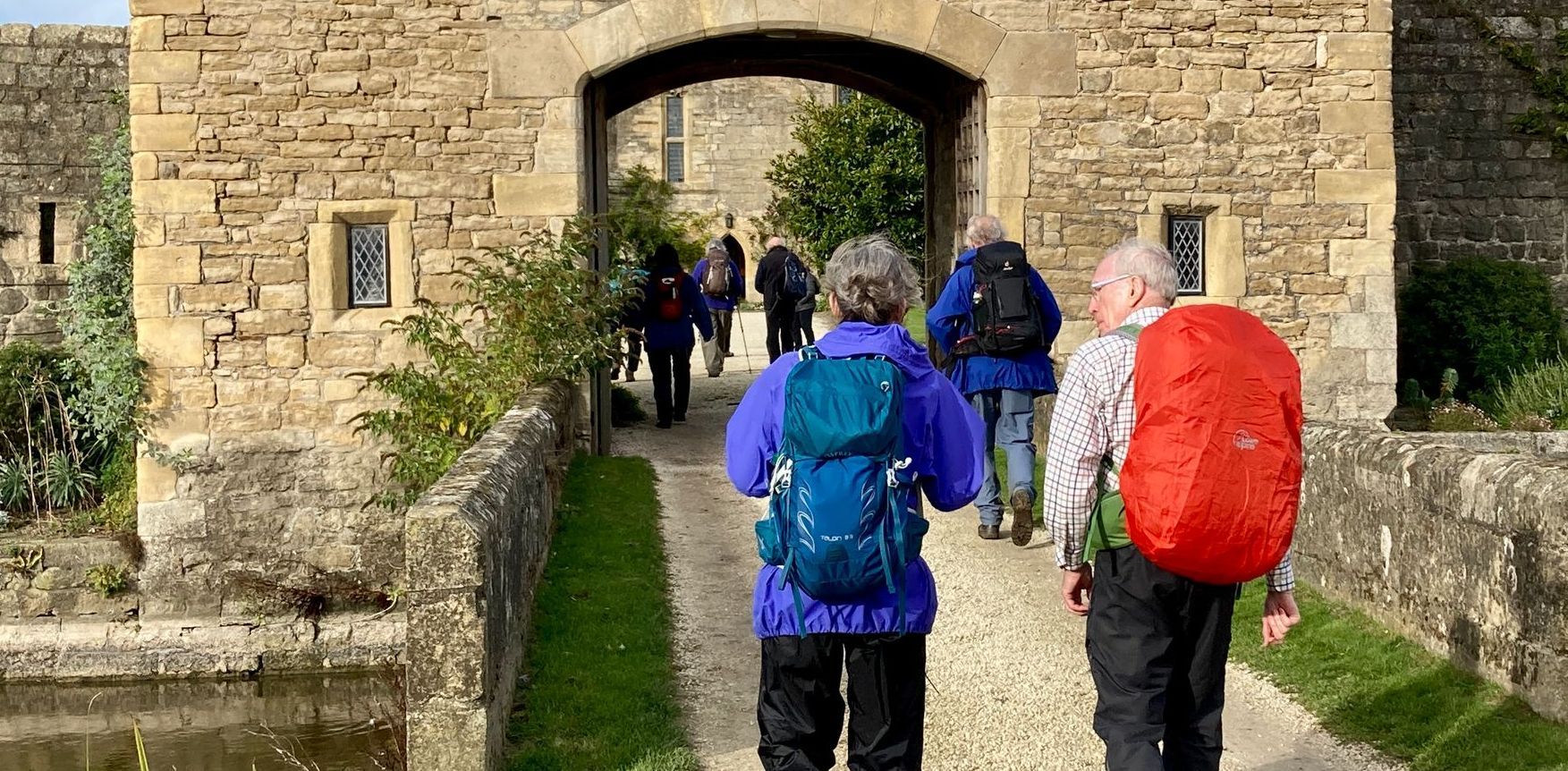STUDYING PILGRIMAGE
The academic study of contemporary pilgrimage is well established and brings together
anthropologists, geographers, ethnologists, and those working in tourism studies,
In this section Professor John Eade explains why anthropologists and other academics study pilgrimage,
how they carry out their work and what has been learnt so far. He also sets out new areas for study.
John Eade is Professor of Sociology and Anthropology at Roehampton University,
Visiting Professor at Toronto University and former Executive Director of CRONEM, the Centre for Research on Nationalism, Ethnicity and Multiculturalism.
He is an international expert on the anthropology of pilgrimage and has written widely on the subject.

Anthropology as an academic discipline developed during the late 19th and early 20th century in Europe and N. America through comparisons between the supposedly enlightened, ‘modern’ societies in these regions and pre-modern, ‘traditional’ societies in Africa, the Indian sub-continent and Native American communities in the mid-West of the Unites States, for example. Although religion was a prime topic within these comparisons, religious pilgrimage was ignored and research in the European region was left to historians who focused on the centuries before the 16th century Protestant Reformation.
During the late 1980s anthropological interest in pilgrimage began to emerge stimulated by the publication of Image and Pilgrimage in Christian Culture (1978) written by a redoubtable pair of anthropologists, Victor and Edith Turner. Victor Turner had undertaken fieldwork in Northern Rhodesia (Zambia) during the 1950s and 1960s on social and cultural systems among the Ndembu and had published the highly influential The Ritual Process in 1969. Conversion to Catholicism encouraged both Victor and Edith to turn their attention to Catholic pilgrimage in Mexico and Western Europe and their pioneering study was followed by studies of European Catholic pilgrimage by Mary Nolan, an American geographer, and her husband, Sidney (1983, 1989), the study of Hindu pilgrimage in West Bengal by Alan Morinis (1984) and the magisterial analysis of pilgrimage in the High Andes of Peru by the British anthropologist, Michael Sallnow (1981, 1987).
As these early studies indicate, although some anthropologists were attracted to contemporary religious pilgrimage, the topic also interested geographers and others from the social sciences. Furthermore, researchers were also looking beyond Catholic pilgrimage in the European region to pilgrimage in Latin America and India. During the 1990s this widening of disciplinary and geographical interest accelerated and researchers began to look beyond religious pilgrimage to other formations such as spiritual pilgrimage, secular pilgrimage and military pilgrimage, as well as the ways in which the intimate relationship between pilgrimage and tourism was generating hybrid forms categorised as religious tourism and pilgrimage tourism.
The academic study of contemporary pilgrimage has now become well established and brings together anthropologists, geographers, ethnologists, and those working in tourism studies, folklore studies, health studies and regional studies around the world. With regard to religious pilgrimage there is now a well established appreciation of how meanings, motivations, beliefs and practices can be contested as well as express a sense of universal harmony and transcendence (see Eade and Sallnow 1991). Moreover, popular assumptions about the hierarchical separation between the sacred and the profane have been challenged by evidence of the ways in which the two are intimately related through political, economic and social mechanisms. Pilgrimage to Rome, Mecca, Varanasi and Amritsar, for example, relies on a highly globalised travel and tourism industry and pilgrims engage in a range of activities at these destinations that include shopping and relaxing in hotels, restaurants and cafes. Religious activities involve not only an engagement with institutional beliefs and practices but also a sensual interaction with material items, such as water, stones, statues and images. Although pilgrimage studies has focused on pilgrimage as a human activity, the long established practice of relics travelling reminds us about another mode of pilgrimage – the 2022 tour of St Bernadette’s relics around the USA and UK is a recent example of how the past and the present can be connected through religious pilgrimage. The journey of Queen Elizabeth 11’s coffin from Scotland to London and on to Windsor also bore some of the hallmarks of pilgrimage.

Anthropologists typically rely on qualitative research methods. Researchers have traditionally immersed themselves within a different social and cultural environment by spending substantial periods of time living within a particular community. Rather than using formal questionnaires they learn about the beliefs and practices of others by participating in their everyday routines and engaging in conversations or interviews with them about those beliefs and practices. This flow of information is recorded in various ways – by taking notes, recording conversations and more formal interviews, and taking photographs. Immersion in another society and culture often involves learning another language, while anthropologists like other social scientists have to negotiate divisions based on gender, wealth and social status.
These research methods have been developed for use within stable, settled communities such as villages or local neighbourhoods where people interact frequently and know a great deal about one another. Anthropological interest in pilgrimage was slow to develop because pilgrimage did not fit within this focus on settled communities – pilgrimage, by definition, involves movement between places and groups spend relatively short times travelling or staying at a particular destination. However, the ways in which people, information and images are globally mobile today has led anthropologists and other social scientists to see religious and other forms of pilgrimage as a paradigmatic activity and explore not only what people do at pilgrimage destinations but also during their travel to and from these destinations.
Three important developments have also widened the range of anthropological research methods and interests. The first is the autoethnographic approach where anthropologists reflect on their own involvement in the encounter with others; they are not detached, ‘objective’ observers in other words. The second emphasises the relationship between mind and body and links to the autoethnographic approach since researchers like other humans are engaged through their bodies as well as their minds in the world around them. The third encourages us to reflect on the ways in which material objects affect us – they are not just inert objects subject to our control and are active agents shaping our lives. Relics, for example, are not just material artefacts but stimulate devotion and the burning of reliquaries and statues during the Reformation reflected this belief in their dangerous agency and power.

Although religious pilgrimage rapidly declined during the 16th century after the destruction of shrines within cathedrals and churches, as well as monasteries, Roman Catholics still continued to travel to St Winefride’s Well in northern Wales and Irish Catholic migration to the British mainland during the 19th century contributed to the revival of pilgrimage which also developed within the Church of England. Walsingham emerged as a major centre of both Anglican and Catholic Marian pilgrimage during the early 20th century, while in the west London suburb of Willesden the medieval ‘black Madonna’ cult was revived at the same time by Catholics and Anglicans. More recently, pilgrimage to Anglican cathedrals across the British Isles has also revived with the restoration of St Cuthbert’s shrine in Durham cathedral and attempts to locate the most famous shrine in medieval England – that of Thomas Becket in Canterbury cathedral. The revival of pilgrimage in Glastonbury – another major centre - has taken a more ‘spiritual’ turn through the settlement of those invested in alternative religious and spiritual practices. Walking along pilgrimage routes has also been promoted by such organisations as the British Pilgrimage Trust, English Heritage and Maximum Adventure, while the Church of England is also now promoting its own pilgrimage routes (see https://www.churchofengland.org/media-and-news/stories-and-features/new-pilgrim-routes-launched-one-britains-busiest-holiday).
Until recently, anthropological research of pilgrimage was mainly undertaken by Simon Coleman, a British professor of anthropology who was based in England but then moved to Toronto. Since the late 1990s he has produced a raft of papers that focus on Walsingham and in 2014 he joined a team drawn from history, religious studies and anthropology in a study of pilgrimage and cathedrals focussing on Durham, York, Canterbury and Westminster Cathedral. The project ran between 2014 and 2017, was funded by the Arts and Humanities Research Council and has produced a large number of publications that have helped to strengthen links between anthropology and other disciplines and raise the profile of pilgrimage studies within the UK. Recently pilgrimage to Durham cathedral has also attracted the interest of another anthropologist, Jonathan Miles-Watson, who is based at the University of Durham, and important contributions to our understanding of contemporary pilgrimage have been produced in related disciplines.
A very different research project is currently being undertaken by anthropologists based at the University of Sussex. The project, funded by the Leverhulme Trust, is exploring the relationship between global pilgrimage and economics through the involvement by Sikhs, Muslims, Jews and Christians living in Birmingham in pilgrimage to major shrines in South Asia, the Middle East and Europe. Jon Mitchell, one of the Sussex anthropologists, is studying the Roman Catholic pilgrimage to Lourdes by the Birmingham diocese as well as the diocesan pilgrimage to the local English shrine at Hednesford outside of Birmingham.
Anthropologists have been more interested in pilgrimage to Anglican rather than Roman Catholic places of worship, therefore, and this not surprising given the large number of Anglican sites and the emphasis by the Roman Catholic hierarchy on pilgrimage to sites across Continental Europe, such as Rome, Assisi, Lisieux, Lourdes, Fatima and Santiago de Compostela. Simon Coleman has included pilgrims to the Slipper Chapel within his Walsingham research but the long established shrine of St Winefride’s Well, the substantial pilgrimages to St Simon Stock’s shrine at Aylesford near Canterbury and the revival of pilgrimage to the ‘black Madonna’ shrine at Willesden and the other twenty-odd shrines across Britain (see https://en.wikipedia.org/wiki/Category:Roman_Catholic_shrines_in_the_United_Kingdom) have not attracted the same interest.

Despite the key role played by anthropologists in the growth of pilgrimage studies the study of Catholic pilgrimage in Britain is in its infancy. Research has concentrated on shrines located in European countries which resisted the Reformation, such as France, Portugal, Spain, Italy, Croatia, Austria, Lithuania and Poland. At the same time, anthropologists and others are studying the popularity of walking along routes leading to Santiago de Compostela which has led to those from Scandinavia and other Reformation areas of Europe to join the ‘camino’. Pilgrimage routes have emerged in Norway, for example, with the Lutheran cathedral of Trondheim as their destination and the St Olav, as their official patron.
The study of Catholic pilgrimage in this country can learn from these European developments and the networks pilgrimage researchers have established, such as the European Association of Social Anthropologists’ Pilgrimage Studies Network and those subscribing to the International Society for Ethnology and Folklore.
Much can be learned from the accumulated body of knowledge generated by anthropologists concerning the many different types of pilgrimage that have emerged around the world, the multiple reasons why people go on pilgrimage, the variety of activities they engage in (they do not just pray), their bodily engagement with material objects which have their own agency, e.g. relics, statues and pilgrimage certificates.
Further Reading
V. and E. Turner (1978) Image and Pilgrimage in Christian Culture.
J. Eade and M. Sallnow (eds) (1991) Contesting the Sacred: The Anthropology of Pilgrimage.
S. Coleman and J. Eade (eds) (2004) Reframing Pilgrimage: Cultures in Motion.
D. Albera and J. Eade (eds) (2015) International Perspectives on Pilgrimage Studies: Itineraries, Gaps and Obstacles.
S. Coleman and J. Eade (eds) (2018) Pilgrimage and Political Economy: Translating the
Sacred.
The Centre for the Study of Christianity & Culture, University of York, see
https://www.christianityandculture.org.uk/research


